- Home
- Bill Pronzini
Son of Gun in Cheek Page 7
Son of Gun in Cheek Read online
Page 7
“Hey!” The red-headed doll came running in angrily. “You shot a hole in my underpants!” (G. G. Fickling, Naughty but Dead)
The category of Whacky Word Choices:
It was a whirlwind courtship that ended in marriage at St. Malachy’s three years later. (Frank Kane, The Living End)
Almost before the Intelligence officer was aware of it, the police car stood panting before the Copacabana Palace. (Van Wyck Mason, The Rio Casino Intrigue)
My car hesitated on the curving drive. Chipmunks stood inverted on the mighty tree trunks and watched me brightly. (Jeremy Lane, Death to Drumbeat)
He sat on the edge of the bed, slid his hat back on his head and grinned at Eric tersely. (Lois Eby and John C. Fleming, Death Begs the Question)
To return the money to the Israeli treasury would mean so much. Hospitals, roads, schools for all those whose lives were lost. (Anne Reed Rooth and James P. White, The Ninth Car)
He started deeper into the blackness, heard two voices speaking excitedly in German, and flopped on the floor of the concealed hall. Bullets chattered above him. (Dan Streib, Hawk #6: The Seeds of Evil)
When the coffee had arrived and Senor Alverez’s cigar was in full blast, he continued the narrative, to which I listened most attentively. (A. Salusbury MacNalty, The Mystery of Captain Burnaby)
Carr stopped his nervous hair pummeling. (Lois Eby and John C. Fleming, Death Begs the Question)
The category of Inarguable Logic:
You could have cut off an arm or a leg and I wouldn’t have been able to lift so much as a finger in protest. (Amber Dean, Chanticleer’s Muffled Crow)
“I’m not crazy about risking my life. Not for free, anyway. Let’s not forget, in the midst of all this fun, that whoever killed the guy is a killer.” (Shelley Singer, Free Draw)
The category of Unintentional Puns:
Alden said, “I’ll never forget the day I married Mae—she was wearing a bustle and it busted. Say, if Ruth wants her bustle pumped up, I’m just the man—”
That went uncomfortably flat. (George Worthing Yates, If a Body)
“. . . You know, there’s a hell of a lot of screwballs around. They come in to report all sorts of stuff to the cops. People with persecution complexes are the worst. For awhile . . . the desk sergeant used to sick some of the choice ones onto me.” (Dale Clark, Focus on Murder)
“. . . Somehow, I am terribly afraid out here [swimming] to-night—more afraid even than I was back there on the schooner.”
“You needn’t be!” Ronald cried out buoyantly. (Frank L. Packard, The Gold Skull Murders)
“Enough to poison you for it?” His tone was skeptical. “You’d never get me to swallow that.” (Helen Traubel, The Metropolitan Opera Murders)
“It’s tough for her to fall like that,” said Monk, “for the woman isn’t made who can get a rise out of Doc Savage.” (Kenneth Robeson, Quest of the Spider)
The category of Portentous Statements:
That was my first look at Merriwether Manor, where Murder had rented a room ahead of me. (Jeremy Lane, Death to Drumbeat)
The category of Reductio ad Absurdum:
On the other side a man in a uniform clanged the door shut behind me. Now I knew how Jimmy Cagney felt in The Big House. (Dorothy and Sidney Rosen, Death and Blintzes)
The . . . paper and suit would be gone over by a magnifying glass, a fine tooth comb, or any other simile you could think of for thoroughness. (Amber Dean, August Incident)
On the street outside, a MUNI bus blurted out a few exhaust remarks.
The frosted glass [door] showed the gray silhouette of a figure. A woman. And something tightened across Carver’s chest. Hunch time in the old coconut. (Kenn Davis, Melting Point)
The category of the Ill-Advised Said Substitute:
“Then it is Piper?” she horsed [sic]. (Lawrence Lariar, He Died Laughing)
“You’re getting off easy,” fare welled Comfrey. (Dale Clark, Mambo to Murder)
“Fool!” he apostrophized himself bitterly. (Gwyn Evans, Mr. Hercules)
“Keep telling it,” I shoved at Vivette. (Dale Clark, Mambo to Murder)
“Oh, pardon me, honey,” Sue gargled, voice dripping crocodile apologies. (Rick Wayne, Play Rough!)
“He’s going to get a doctor for her?” nasaled Doyle. (Dale Clark, A Run for the Money)
“A man can be wrong once,” he twinkled. (George Joseph, Leave It to Me)
The category of Missing Sibilants (or “The Snake Doesn’t Have All the Lines”):
“You animal!” she hissed. (James Ellroy, Blood on the Moon)
“What would I naturally be doing?” he hissed. (Isabel Briggs Meyers, Murder Yet to Come)
And finally, the category of “Huh?”:
The wretched bird dog that looked like a hatrack lay full-length in the middle of the floor. (Sue MacVeigh, The Corpse with the Three Ex-Husbands)
The anticlimax was terrific, it was catastrophic. (Arthur M. Chase, Peril at the Spy Nest
He looks like a basilisk [Jean thought]. She wasn’t quite sure about it—what a basilisk was, much less what one looked like—but its sound had the feeling of his face. (Rufus King, Valcour Meets Murder)
“. . . and I was in New York [and] my God, you wouldn’t believe what they’ve got . . . alligators and crocodiles and beavers and rats and who the hell knows what else lives in the sewers. (Thomas Gifford, The Cavanaugh Quest)
Until he had thoroughly satisfied himself that none of these four had had a hand in the killing, it would be foolish to go off on wildgoose chases in other directions, no matter how promising or inviting they might seem. (Joseph Bowen, The Man Without a Head)
Thereupon North released a small mental spring which tilted gallows of cold caution over this young woman’s rising appeal. (Van Wyck Mason, The Cairo Garter Murders)
Thoughtfully he dropped his eyes down at the glass in his hands. A strong highball, whose strength was already beginning to gain an affection over his brink. (George Fredrics, Consider Yourself Dead)
Promises lurked in her voice. Though square rigged, she was a luscious parcel, and gift wrapped. Carmody had to quit denying that he had a nagging urge to unwrap Velma. The shirred blouse, reaching to the collarbone, gave no glimpses of curves worth a fortune in TV, but by way of compensation, it did a more striking job than any sweater could have done. . . . There was a tantalizing suggestion of pliability which belied the expression around the eyes and mouth. All the earlier antagonism was being submerged by friendliness. . . .
Fully dressed the woman was a strip-tease. She radiated magnetism; and what little there was left of her subtle air of defying the world now served only to stir up an urge to make her totally sweet, wholly clinging, entirely submissive.
Her voice, and that double-breasted perfume made him too woman-conscious for clear-thinking. . . . Once more, the thought that her solidity was concentrated where it would do the most good disturbed him. (Hamlin Daly, Case of the Cancelled Redhead!)
4
The Amazing Adventures Of The Kracked King Of Keelerland
The man who came in . . . was about 35, and exceedingly dark of skin, though by no manner of means a Negro; indeed, his blue-black hair was as straight as hair could be; his jet eyes were a cold black, and there was a scar on one cheek. Dressed in green-striped trousers of almost dandified cut, he was in his shirtsleeves, which, patterned with pink stripes and interlocked green flowers, were the final touch that proclaimed plainly his Sicilian blood.
—Harry Stephen Keeler,
The Case of the 16 Beans, 1944
He turned back in the direction he had come, and walking rapidly eastward soon passed under the same viaduct from which he had descended a short while before, and Chinatown now lay in his rear.
—Harry Stephen Keeler,
The Green Jade Hand, 1930
One of his publishers said of him: “This master-mysteryman writes baffling, fast-moving yarns [whose] odd plots relate some of the strangest things
that ever happened to man.”
The San Francisco Chronicle challenged readers to “just try to worry about your own trials and tribulations when you’re working on [one of his] conundrum[s], slinking down dark alleys, trailing Oriental and Occidental villains, examining curious lethal devices employed by the Portuguese, the Armenians and the Greeks to say nothing of the Chinese!”
The Baltimore Evening-Sun offered one of many dissenting opinions: “He writes in a strange jargon which eschews the distinctions between the parts of speech, and employs such a system of punctuation as no other writer save perhaps Gertrude Stein ever dared.”
The New York Times put it even more succinctly: “All [his] novels are written in Choctaw.”
Critic Art Scott opined that his “preposterous tales might best be described as the sort of story you might expect to get had W. C. Fields ever managed to spin out to full length the tales he was always beginning: ‘Yas, my dear, I remember once when I was 2,000 miles up the Umbobo river, armed only with an assegai . . .”
He himself, in a letter to a fan, cheerfully admitted that “some people have claimed (librarians) that the author is certainly insane.”
And Francis M. Nevins, Jr., perhaps the most passionate of his champions, eulogized him thus: “When they made [him] the mold self-destructed. For close to half a century he stomped through the staid precincts of the mystery story like King Kong crossing a country churchyard. His . . . novels form a self-contained world of monstrously complicated intrigues, half farce and half Grand Guignol, half radical social criticism and half a labyrinth in which he hid himself. . . . He was the true original of Kesey’s R. P. MacMurphy and Vonnegut’s Kilgore Trout, the sublime nutty genius of the mystery genre.”
The subject of all these comments is, of course, Harry Stephen Keeler. And a nutty genius he indeed was. More to the point of this narrative, he was also the first great alternative writer—and one of the three or four greatest of all time.
Some Keeler devotees might take exception to the last statement. He was sui generis, they might say; he transcended any labeling of bad or good; he and his work stand aloof. Ah, but you can say the same about Michael Avallone, Michael Morgan, Florence M. Pettee, Anthony M. Rud, or any of the other alternative behemoths. Indeed, you can also say the same about Doyle, Hammett, Christie, Carr, Spillane, and others at the opposite end of the criminous spectrum. Fact is, we live in a world of labels and categories; everybody got to fit someplace. I say Harry Stephen fits here better than anywhere else, so at least for the duration of this chapter I lay claim to him and his fifty-odd (very odd) novels published in the English language.
Dissenters may skip to Chapter 5. The rest of us will proceed.
Harry Stephen Keeler was a Chicago native, born in 1890. He spent most of his life in the Windy City, where he worked as an electrician, in a steel mill, as a pulp magazine editor (10-Story Book, one of the lesser pulps, from 1919 until the magazine’s demise in 1940), and of course as a freelance writer. He wrote his first short story in 1910, made his first professional sale in 1913, and published his first criminous story in 1914: “Victim Number Five,” in Young’s Magazine (reprinted thirty-eight years later in the 1952 Mystery Writers of America anthology, Maiden Murders). In 1919, the same year he began working for 10-Story Book, he married Hazel Goodwin, also a pulp writer, who specialized in light fantasy and love stories of the forgettable variety. It seems to have been a perfect union, in that Goodwin not only encouraged Harry Stephen’s literary endeavors but collaborated with him on numerous manuscripts and evidently inspired more than one of his screwball plots. Three years after Goodwin’s death in 1960, Keeler married a second time, to his long-time secretary, Thelma Tertza Rinaldo, who also collaborated on his novels. This second marriage ended with Keeler’s death in February of 1967.
His first novel, The Voice of the Seven Sparrows, was in fact one of many magazine serials he penned between 1919 and 1924; it was first published in book form by Hutchinson in England in 1924, and didn’t see print here until four years later (E. P. Dutton). His third book, The Spectacles of Mr. Cagliostro, seems to have been his own personal favorite among his early work; he once said in a letter that it was “scornfully rejected by nearly every publisher in the U.S.A., none even vouchsafing me a letter on it, and then issued by a firm [Dutton] which turned it down (as optional book) and did mighty damned well.” Two other early titles, Sing Sing Nights and The Amazing Web, were also well received in both England and this country. In Blood in Their Ink, British mystery writer and critic Sutherland Scott said of The Amazing Web: “It would be quite impossible to attempt to analyse the plot, which darts hither and yon with quite indescribable abandon. Yet it remains a truly great mystery story.” On the other hand, Francis Nevins, in an article for The Armchair Detective, called it “the worst legal mystery in the world.”
All in all, Keeler published some forty-nine novels in the English language between 1924 and 1953. Numerous other novels appeared only in Spanish and/or Portuguese throughout the 1950s and into the 1960s; still others exist only as unpublished (and mostly unpublishable) manuscripts. Keeler’s particular brand of lunacy, reasonably popular in an era (the twenties and thirties) that embraced the likes of Doc Savage, the Shadow, and entire magazines devoted to stories about zeppelins, was not met with favor by the serious-minded folk of the post-World War II years. Keeler’s last novel to appear in the United States was The Case of the Transposed Legs (in collaboration with Hazel Goodwin) in 1948. And its publisher—in fact, the publisher of the last nine of his novels to appear here, from 1943 to 1948—was that colossus among alternative houses, Phoenix Press.
Just what is a Keeler novel? those of you who have never read one might be asking at this point. The answer to that question is by no means an easy one. “A Keeler novel,” Art Scott says, “is a stupefyingly complex skein of multiple interlocking plots and subplots, the whole mass structured according to a scheme of Keeler’s own devising.” Harry Stephen labeled this complex skein a “web-work plot” and early in his career wrote a treatise on the subject: “Mechanics and Kinematics of Web-Work Plot Construction,” which was published serially in The Author & Journalist between April and November of 1928. Here is Francis Nevins’s explanation of the web-work plot novel, from a four-part article on Keeler and his work in The Journal of Popular Culture:
The web-work novel may be defined as a book of pure plot which bears not the slightest resemblance to real life but which is so meticulously constructed that regardless of the book’s length—and Keeler’s lengthiest run over 1500 pages—every absurd complication turns out to make blissfully perfect sense within the author’s zany terms of reference. Keeler intensifies the deliberate and gleeful artificiality of his novels by using certain devices much as wild cards function in poker; among these devices are lunatic laws, nutty religious tenets, wacky wills and crackpot contracts, but his most famous and most characteristic ploy is the system of interlocked back-breaking coincidences.
Keeler’s other favorite “wild cards” include rare books of one type or another, most of which have elaborate titles and histories of his own devising; oddball curios such as human skulls and ancient pieces of Chinese jade; cryptograms and puzzles; quasi-science-fictional devices and situations; and a seemingly inexhaustible storehouse of esoteric information on such topics as literary incunabula, politics, safes and safecracking, clocks, electricity and neon signs, steel mills, mathematics, horse racing, Chinese history and philosophy, lunatic asylums, lighthouses, circuses, embryonic television, and Nicaragua. He owned a “private morgue” of thousands of newspaper clippings which he kept in a series of little drawers in a huge filing cabinet, each marked after the fashion of an encyclopedia. When he was ready to embark on a new novel, according to bibliophile and fellow mystery writer Vincent Starrett (who knew him well), Keeler “would grab a hatful of [these clippings], stir them together, and select anywhere from six to a dozen at random; and these became the basis of his story. However
disparate in time or place or circumstances, he welded them into a continuous narrative and forced them to ‘click.’”
Another of Keeler’s favorite ploys was to recycle his own and Hazel Goodwin’s magazine fiction, using it whole or in part, revised or unrevised, expanded or compressed, as the foundations of some novels and as web-work plot elements in many others—making him the champion self-plagiarist of this century. In some cases he included complete stories, word for word and with their original magazine titles, plunking them into the narrative anywhere from near the beginning to near the end; these stories always have some integral plot function, although that function may not be clear to the reader at first. In The Face of the Man From Saturn, for instance, an enthusiastic paean to socialism (one of Keeler’s pet causes, along with such others as political corruption and the evils of capital punishment), there is a long science fiction story called “How Socialism Finally Arrived in the World,” set in the year A.D. 3235 and featuring a professor of history at the University of Terra. A pulp gangster story, “The Search,” concerning a pickpocket known as the Eel, can be found in The Man with the Magic Eardrums. The Vanishing Gold Truck contains what Keeler, in the novel’s dedication, calls a “beautiful little circus story” (“silly” and “unreadable” are more appropriate descriptive adjectives) by Hazel Goodwin entitled “Spangles,” which first appeared in Best Love Stories Magazine; Keeler so admired it that he used it’s central characters, the circus folk of MacWhorter’s Mammoth Motorized Shows, in this and five subsequent novels. Two other Goodwin stories, “Slim Decides” and “20 Minutes,” appear verbatim in The Case of the Mysterious Moll and The Case of the Barking Clock, respectively. And an unintentionally hilarious Keeler “Chinese fable” called “The Murder of Chung Po: The First Detective Story: The Fable of the Murdered Hermit, the Assortment of Variegated Eggs, the 3 Superficially-Thinking Wisemen, and the Cogitating Magistrate” graces the pages of one of Harry Stephen’s alternative masterpieces, The Case of the 16 Beans.

 Twospot
Twospot Dragonfire
Dragonfire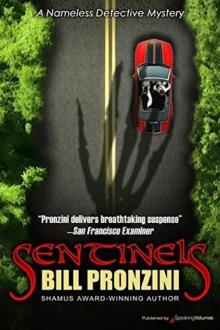 Sentinels
Sentinels The Peaceful Valley Crime Wave
The Peaceful Valley Crime Wave Hardcase
Hardcase Bleeders
Bleeders Demons
Demons The Pillars of Salt Affair
The Pillars of Salt Affair Epitaphs
Epitaphs Spook
Spook Hoodwink
Hoodwink Bug-Eyed Monsters
Bug-Eyed Monsters Endgame--A Nameless Detective Novel
Endgame--A Nameless Detective Novel The Hidden
The Hidden The Paradise Affair
The Paradise Affair Oddments
Oddments Boobytrap
Boobytrap Blue Lonesome
Blue Lonesome Scenarios - A Collection of Nameless Detective Stories
Scenarios - A Collection of Nameless Detective Stories Breakdown
Breakdown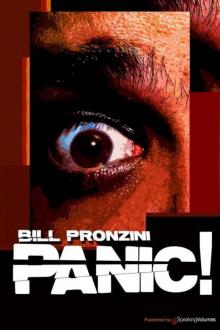 Panic!
Panic! The Bags of Tricks Affair
The Bags of Tricks Affair Quicksilver (Nameless Detective)
Quicksilver (Nameless Detective) Hellbox (Nameless Detective)
Hellbox (Nameless Detective) Nightcrawlers nd-30
Nightcrawlers nd-30 Zigzag
Zigzag The Jade Figurine
The Jade Figurine The Stolen Gold Affair
The Stolen Gold Affair The Stalker
The Stalker The Lighthouse
The Lighthouse Fever nd-33
Fever nd-33 Nightshades (Nameless Detective)
Nightshades (Nameless Detective) Scattershot nd-8
Scattershot nd-8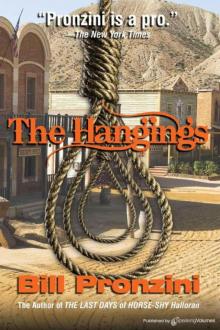 The Hangings
The Hangings Mourners: A Nameless Detective Novel (Nameless Detective Mystery)
Mourners: A Nameless Detective Novel (Nameless Detective Mystery) Graveyard Plots
Graveyard Plots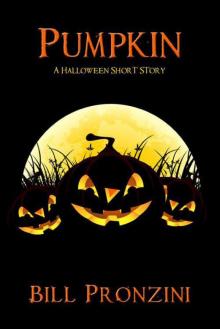 Pumpkin
Pumpkin Schemers nd-34
Schemers nd-34 The Bughouse Affair q-2
The Bughouse Affair q-2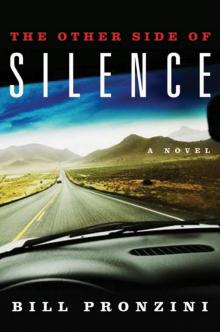 The Other Side of Silence
The Other Side of Silence Savages: A Nameless Detective Novel (Nameless Detective Novels)
Savages: A Nameless Detective Novel (Nameless Detective Novels) Crazybone
Crazybone Schemers: A Nameless Detective Novel (Nameless Detective Novels)
Schemers: A Nameless Detective Novel (Nameless Detective Novels) Gun in Cheek
Gun in Cheek In an Evil Time
In an Evil Time Son of Gun in Cheek
Son of Gun in Cheek Camouflage (Nameless Detective Mysteries)
Camouflage (Nameless Detective Mysteries)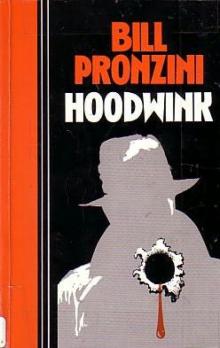 Hoodwink nd-7
Hoodwink nd-7 With an Extreme Burning
With an Extreme Burning Vixen
Vixen More Oddments
More Oddments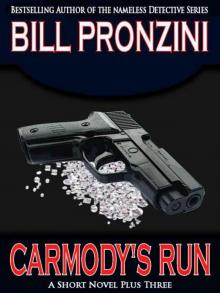 Carmody's Run
Carmody's Run Small Felonies - Fifty Mystery Short Stories
Small Felonies - Fifty Mystery Short Stories Labyrinth (The Nameless Detective)
Labyrinth (The Nameless Detective) Jackpot (Nameless Dectective)
Jackpot (Nameless Dectective) Case File - a Collection of Nameless Detective Stories
Case File - a Collection of Nameless Detective Stories Undercurrent nd-3
Undercurrent nd-3 Betrayers (Nameless Detective Novels)
Betrayers (Nameless Detective Novels) Deadfall (Nameless Detective)
Deadfall (Nameless Detective) Bones nd-14
Bones nd-14 The Snatch nd-1
The Snatch nd-1 Bindlestiff nd-10
Bindlestiff nd-10 Blowback nd-4
Blowback nd-4 A Wasteland of Strangers
A Wasteland of Strangers Double
Double The Bags of Tricks Affair--A Carpenter and Quincannon Mystery
The Bags of Tricks Affair--A Carpenter and Quincannon Mystery Quarry
Quarry Nameless 08 Scattershot
Nameless 08 Scattershot Mourners nd-31
Mourners nd-31 The Vanished
The Vanished Savages nd-32
Savages nd-32 Quincannon jq-1
Quincannon jq-1 Hellbox nd-37
Hellbox nd-37 The Crimes of Jordan Wise
The Crimes of Jordan Wise Bones (The Nameless Detecive)
Bones (The Nameless Detecive) Nothing but the Night
Nothing but the Night Camouflage nd-36
Camouflage nd-36 Pumpkin 1doh-9
Pumpkin 1doh-9 Blowback (The Nameless Detective)
Blowback (The Nameless Detective) Give-A-Damn Jones: A Novel of the West
Give-A-Damn Jones: A Novel of the West Shackles
Shackles The Violated
The Violated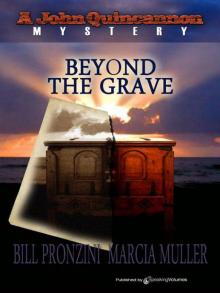 Beyond the Grave jq-2
Beyond the Grave jq-2![The Vanished - [Nameless Detective 02] Read online](http://i1.bookreadfree.com/i2/04/10/the_vanished_-_nameless_detective_02_preview.jpg) The Vanished - [Nameless Detective 02]
The Vanished - [Nameless Detective 02] Quincannon
Quincannon Undercurrent (The Nameless Detective)
Undercurrent (The Nameless Detective) Step to the Graveyard Easy
Step to the Graveyard Easy Nightcrawlers: A Nameless Detective Novel (Nameless Detective Mystery)
Nightcrawlers: A Nameless Detective Novel (Nameless Detective Mystery) The Eye: A Novel of Suspense
The Eye: A Novel of Suspense Betrayers nd-35
Betrayers nd-35 Quicksilver nd-11
Quicksilver nd-11 Acts of Mercy
Acts of Mercy Breakdown nd-18
Breakdown nd-18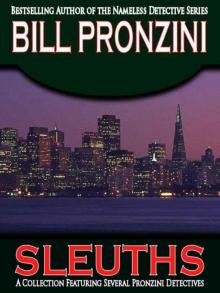 Sleuths
Sleuths![The Snatch - [Nameless Detective 01] Read online](http://i1.bookreadfree.com/i2/04/07/the_snatch_-_nameless_detective_01_preview.jpg) The Snatch - [Nameless Detective 01]
The Snatch - [Nameless Detective 01] Scenarios nd-29
Scenarios nd-29 Nightshades nd-12
Nightshades nd-12 Snowbound
Snowbound Deadfall nd-15
Deadfall nd-15 Bindlestiff (The Nameless Detective)
Bindlestiff (The Nameless Detective) Fever: A Nameless Detective Novel (Nameless Detective Novels)
Fever: A Nameless Detective Novel (Nameless Detective Novels)